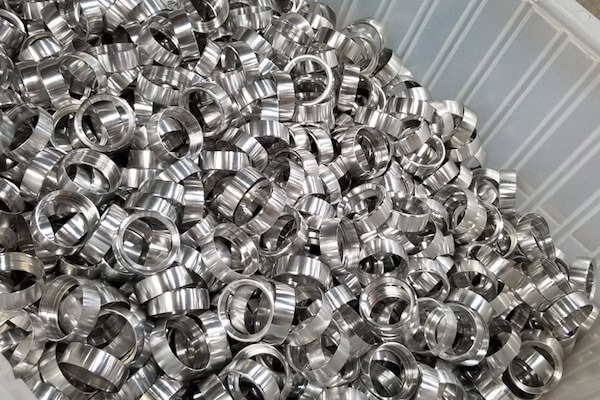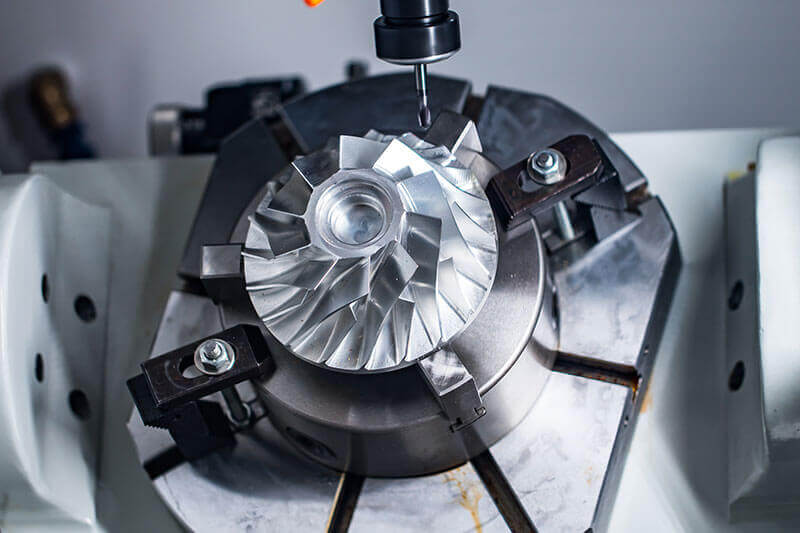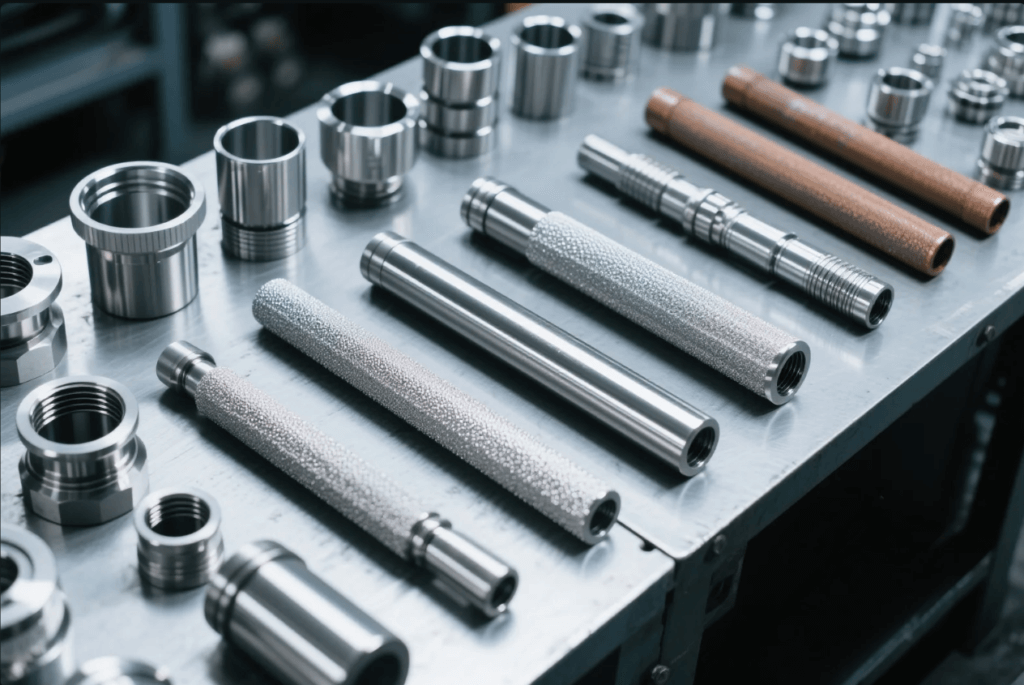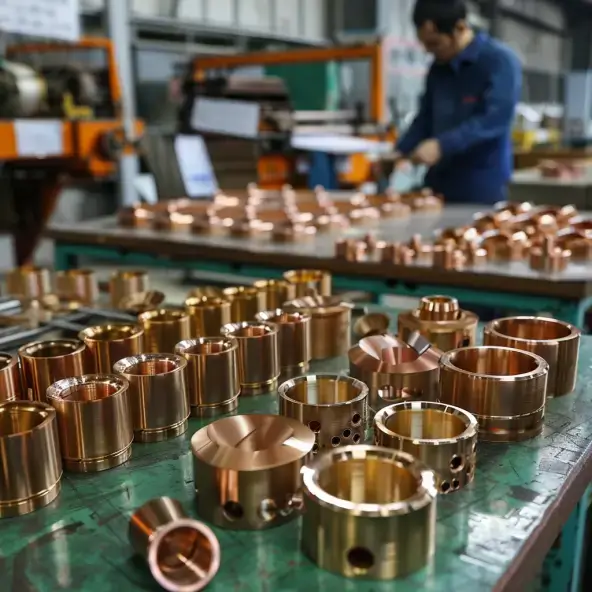1. What is small batch production?
Small lot production is the production of small quantities of parts or products, usually between 50 and 1,000 pieces. Small-lot production is the ideal solution for companies that need flexibility but don’t want to go into mass production.
It works as follows:
- Connecting prototyping and mass production: test your product before scaling up.
- Cost reduction: avoid overproduction and high inventory costs.
- Faster market entry: get products to customers faster.
2. When is small batch production used?
Small batch production is ideal when you need flexibility and efficiency for small-scale production. Here are some common use cases:
- New product development: ideal for testing designs prior to full production.
- Market validation: Produce small batches to gather feedback and improve your product.
- On-demand production: meet specific customer needs without holding excessive inventory.
- Customized Solutions: Customized parts or products for niche markets or unique applications.
3. Key factors to consider when selecting a small production run
The first consideration when choosing small-lot production is cost-effectiveness. Due to high setup costs, small lot production usually results in higher unit costs, but overproduction and high inventory costs can be avoided. Balancing up-front costs and flexibility is the key to controlling the budget.
Material selection is critical to the success of the project. Materials should be selected to meet the performance and durability needs of the product while keeping costs reasonable. Discuss options with the manufacturer to ensure availability and compatibility with your production methods.
Finally, don’t overlook production schedules and quality assurance. Small production runs can reduce turnaround time, but clearly communicating delivery times is crucial. Working with a reliable manufacturer can ensure consistent quality, making small-scale production both efficient and effective.
4. Differences between high-volume and low-volume production
Choosing between high or low volume production depends on your production needs, budget and goals. Let’s analyze it in detail:
Mass production focuses on producing thousands or even millions of products. High-volume production is cost-effective because the unit cost decreases as production volume increases. However, high-volume production requires a significant upfront investment in tooling and inventory, which reduces the flexibility for design changes.
On the other hand, low volume production is ideal for small batches, typically between 50 and 1,000 pieces. It is ideal for testing new products, market validation or customized solutions. While the unit cost may be higher, you save on upfront costs and have more room for product improvement.
5. Benefits of small-scale production
1. Reducing early financial risk from small-scale mass production
To begin with, you can test the waters without investing a huge amount of money. This avoids over-committing to a large inventory and continuously improves the product based on real-world feedback. This is a safe and cost-effective option for startups and new products.
2. Accelerating the speed to market of innovative products
Small batch production gives you a competitive advantage by speeding up deliveries. While other companies are mired in long production cycles, you can launch products, gather feedback and make improvements faster. This is critical to staying ahead of the curve in an ever-changing marketplace.
3. Flexibility for design changes and iterations
Need to adjust your design? Small batch production makes it easy and inexpensive for you to make adjustments. Unlike mass production, it allows you to iterate quickly, ensuring your product meets market demand and customer needs.
4. Reduced inventory costs and increased customization
Why waste cash on excess inventory? Small batch production minimizes inventory costs while providing personalized solutions. It’s the best way to meet niche market demand or deliver customized products and avoid overproduction.
6. Industries that typically utilize small batch production
1. Aerospace industry
In the aerospace industry, precision is critical. Small batch production is used to produce lightweight components such as brackets, housings and connectors. It is ideally suited for aircraft prototypes or customized components required for small lot production.
2. Medical equipment
The medical field relies heavily on small lot production of tools, implants and diagnostic devices. Small lot production helps ensure precision and compliance with stringent regulatory requirements, while accommodating frequent design changes.
3. Consumer electronics
Technology is evolving rapidly, and small batch production helps companies keep pace. Low volume production can be used to produce customized housings, prototypes, and niche products for early market testing and rapid iteration cycles.
4. Automotive industry
Small lot production is used for specialty parts, luxury automotive parts, and aftermarket accessories. Small series production allows customization and testing without the need for mass production.
7. Common methods for small lot production
CNC machining plays a key role in small batch production due to its unrivaled precision and wide range of machining material capabilities. It is the preferred method for industries that need to produce high quality, complex parts in small batches.
typical application
- Aerospace: Custom engine parts, mounts and housings with tight tolerances.
- Medical devices: surgical instruments, implants and diagnostic equipment manufactured to precise specifications.
- Consumer products: high quality prototypes and small volume production for testing and niche markets.
Advantages of CNC machining in small batch production
- Precision: Realize complex designs with precise tolerances.
- Material Versatility: Suitable for metals (aluminum, titanium) and plastics (ABS, PEEK).
- Quick turnaround: produce small batches faster than traditional methods.
- Cost-effective: Avoid tooling costs associated with other methods such as injection molding.
- Flexibility: Great for prototyping, testing and frequent design updates.
With its adaptability and accuracy, CNC machining is the cornerstone of low-volume manufacturing, delivering reliable results across a wide range of industries.
8. How to choose the right method for small batch production
Choosing the right low-volume production method depends on your product needs, budget, and schedule. The following guidelines can help you make your decision:
1. Consider design complexity
- If your design contains intricate details or unique geometric shapes, 3D printing may be the way to go.
- For repeatable precision parts, CNC machining or injection molding are ideal.
2. Assessment of material needs
- CNC machining of metals such as aluminum, brass or stainless steel.
- Choose urethane casting or injection molding for durable plastic parts.
- If you need multiple materials (including composites), choose 3D printing.
3. Assessment of budget and delivery cycle
- For rapid prototyping at minimal cost, 3D printing or polyurethane casting can be used.
- If you need high quality parts and can invest in tooling, injection molding is cost effective in the long run.
4. Defining production volumes
- CNC machining or polyurethane casting are very effective for small series of 50 to 100 units.
- If you need up to 1,000 parts, injection molding offers scalability.
5. Consider end-use applications
- CNC machining is suitable for aerospace or medical parts that require tight tolerances.
- 3D printing is perfect for customizing consumer products and prototypes.
- Injection molding excels in mass market consumer products.
Started small series production at SCZY LTD.
At SCZY LTD, we specialize in providing reliable small volume production solutions to meet your needs. Whether you are prototyping, testing for new markets, or producing in small quantities, we have you covered.
Why SCZYLTD?
- CNC machining expertise: tight-tolerance, accurate, high-quality and precision parts for industries such as aerospace and medical devices.
- Low volume injection molding: offers durable, repeatable parts and cost-effective tooling options.
- Material Versatility: From metal to plastic, we support a wide range of material options to meet your requirements.
conclude
Partner with us to ensure the speed, precision and flexibility that will help you get your products to market faster. Ready to get started? Contact us today to discover how our low volume production solutions can help your project!






